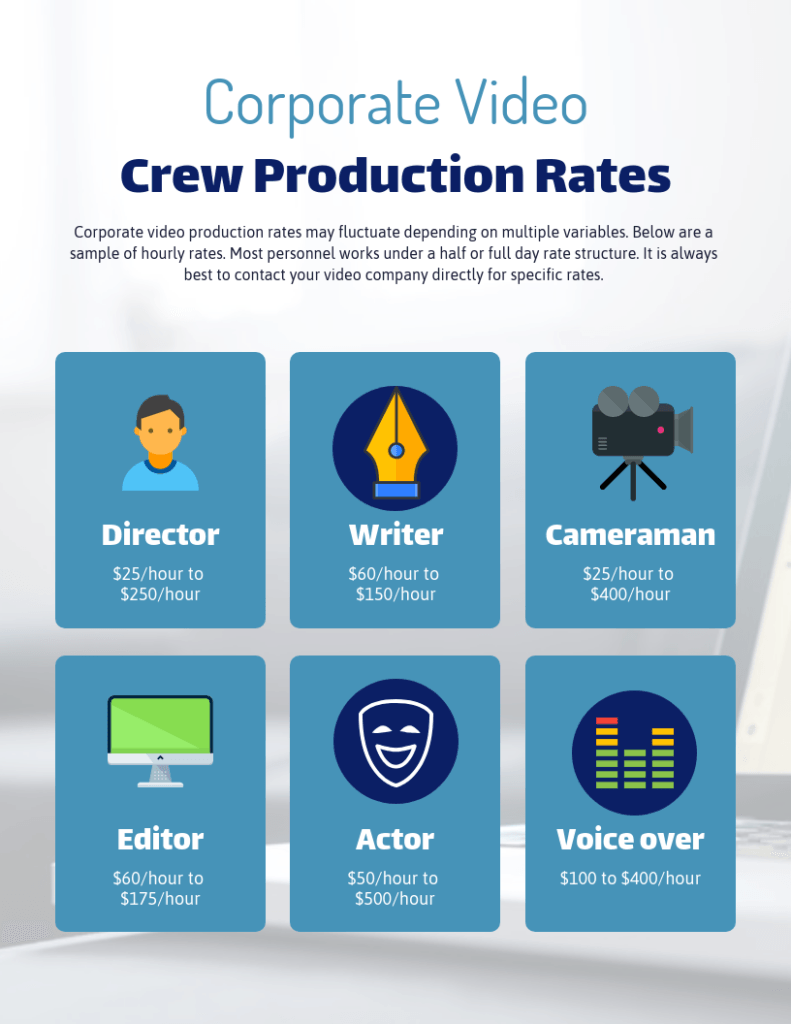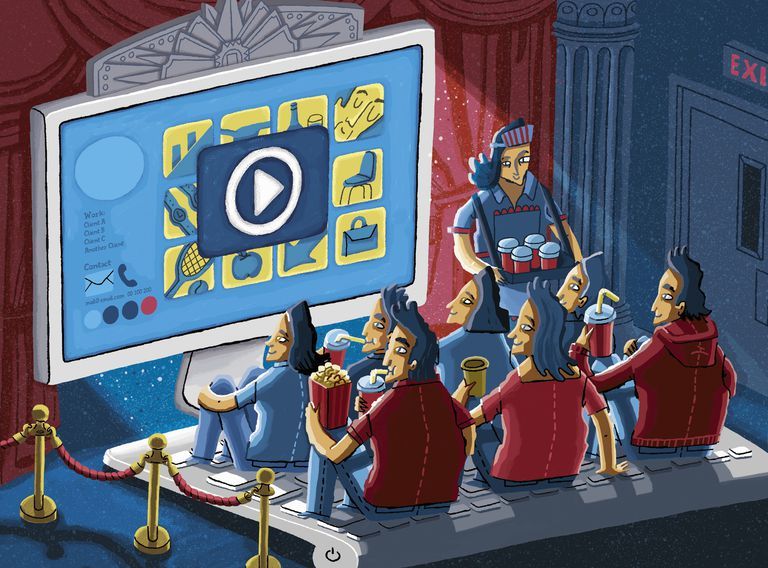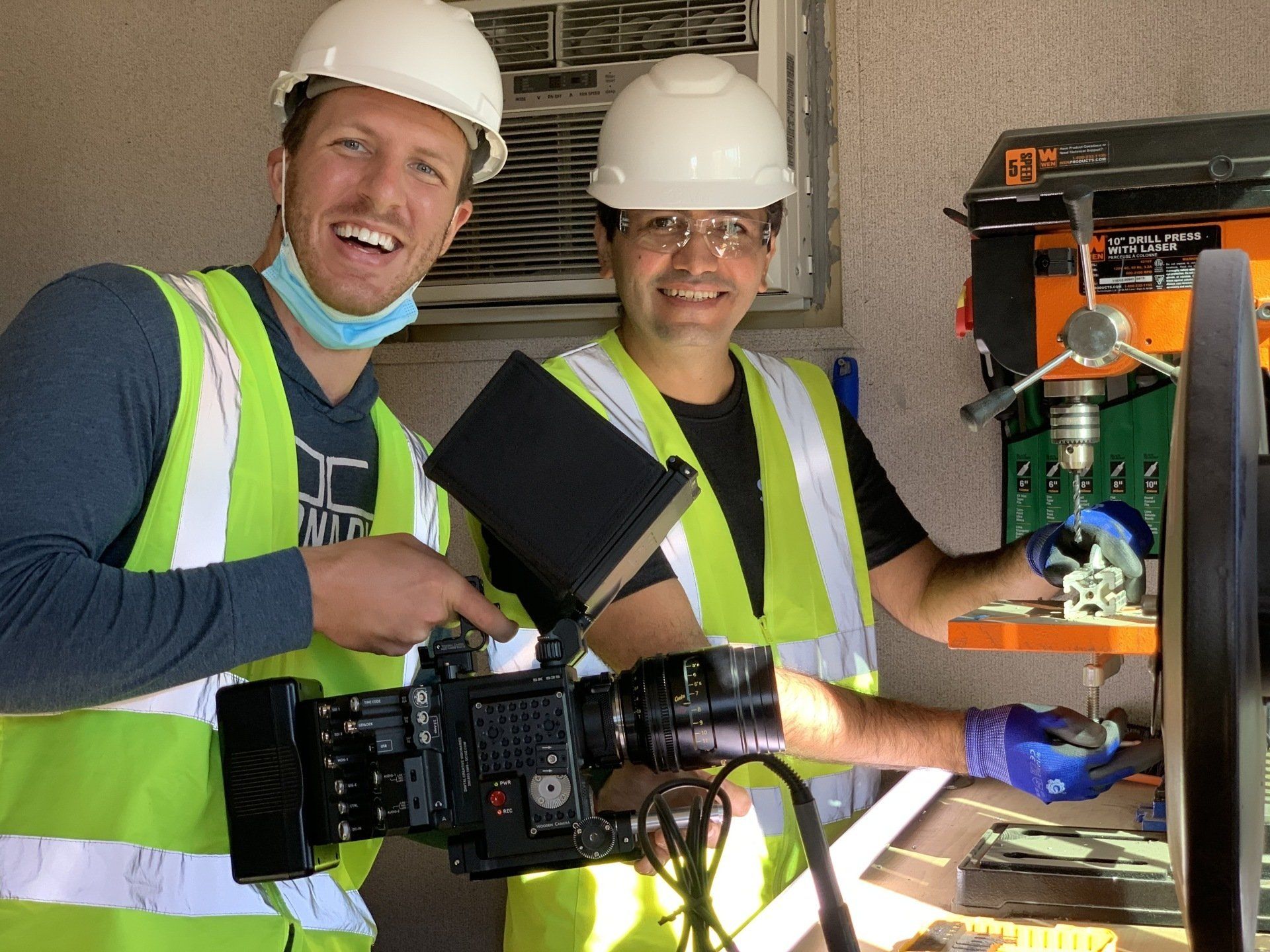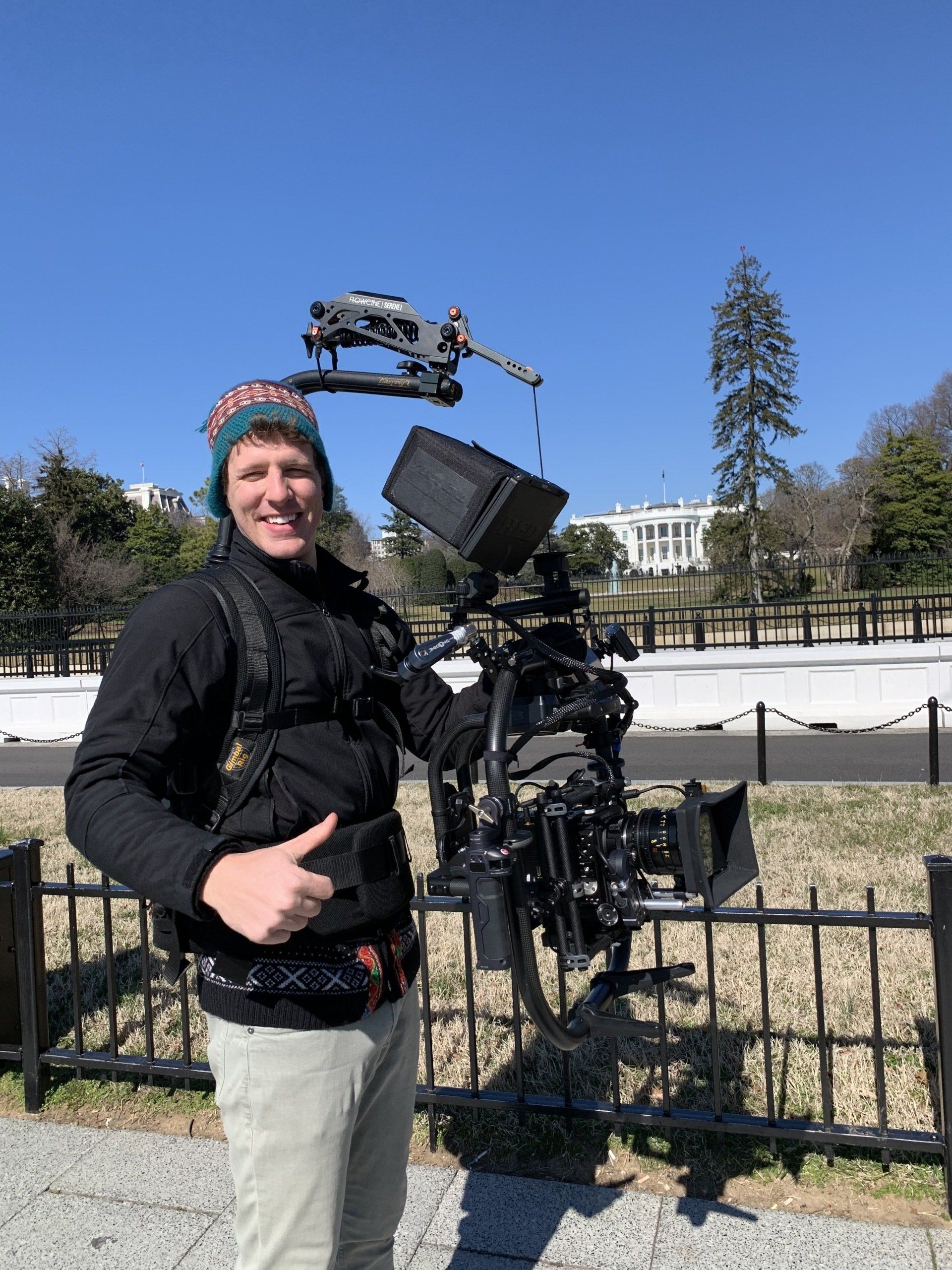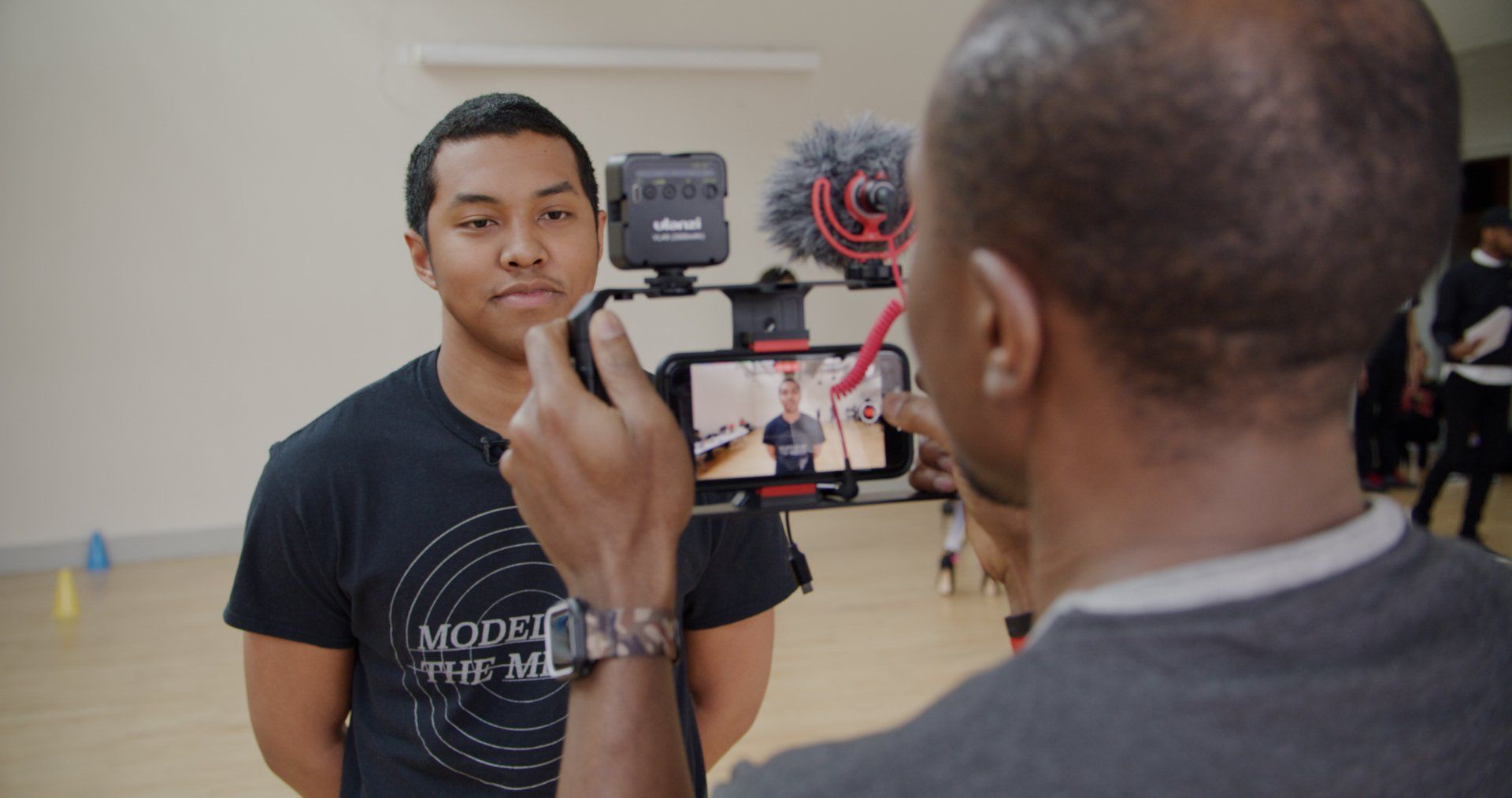How to get an Accurate Video Production Cost
Let’s face it: There’s no magical number you can rely on when it comes to calculating video production costs.
No one wants to be scammed into paying a considerable sum for a simple video.
That’s why you need to refer to a video production costs estimator so that you can get an accurate cost for your video project.
Pricing a video project is a complex process that relies heavily on how much effort it takes to produce, shoot, and edit your video. Goals and expectations may have to be adjusted if you have a tight budget for your video.
This article will help you get a good overview of the pricing of a video so that you can use it as a guide while choosing contractors to handle the creation of your desired video.
The Complexities of Video Pricing
An excellent place to start with a video production costs estimator is the vision you have for your video. It costs more money when you’re dining out in a fancy restaurant than when you’re dining out in a fast-food restaurant.
Suppose you’re planning a shoot that spans a wide variety of locations, and you want to add special visual effects like CGI and animated characters. In that case, you have to prepare yourself to pay more.
In comparison, a video where someone only talks facing a stationary camera won’t cost as much to produce.
It would be best if you considered things like how hard it would be to edit your video, the technical difficulties the crew will have to deal with, and even the capability of the talent you’re hiring to feature in your video.
All of these and many more factors add to video production costs. Continue reading below so that you can start to write down your vision and goals for your video.
What is a project brief?
When you’re ready to sit down and create a cohesive outline for your video, that means you are headed on your way to creating a project brief.
A project brief allows you to consider the reason for creating a video. It enables video production contractors to get the general idea behind your video and allows their creative juices to start flowing.
A project brief shouldn’t be a lengthy document. You can keep it brief and to the point. It just has to be enough to allow you and your partners to see how big or small it’s going to be.
It contains your goals for the project and serves as a guide to not go off track. It’s the light at the end of the tunnel, the finish line at the end of the race.
Once you’ve got the project brief ready to go, potential video production contractors or vendors should be able to do the following:
- Get the main gist of what you’re trying to create.
- resent their ideas and solutions to help achieve your vision.
- Give you an estimate on how much effort it’s going to take to produce your video.
How to create a project brief?
There are four primary points you have to achieve when you’re creating a project brief:
1. The description of the video project
You have to detail each part of the video project to answer the questions, “how many videos are you planning to make?” and “how long is each video going to be?”
Once you’ve outlined how many videos you plan to have produced and the videos' length, you need to describe what the video is going to look like.
Is the video a simple interview conducted by actors or members of your team? Is it an animation that explains the goals of your company?
Answer these questions and figure out how each video will look in the end.
2. The goals of the video project
Video production contractors and vendors need to understand why you are pursuing this project. They need to know the meaning behind the video to achieve it.
Indicate also how success is going to be evaluated through Key Performance Indicators. Set clear goals they can check off to avoid confusion and re-editing or re-shooting.
3. The company’s background and references
In your project brief, you have to include the company’s history, especially details about the industry and how well it’s doing. It sets a standard of how well the video should perform.
Include the branding your company is going for. Does it make products geared towards kids or adults? Is your company known for its witty advertisements? Don’t forget to add these kinds of information in the project brief.
And of course, you can point out what your company has done so far in marketing so that ideas remain fresh and unique. Or it can also help “revive” a trend that succeeded in the past if it’s still relevant at present.
References assure vendors that your company has a good reputation among other contractors you’ve hired before.
4. Other creative ideas about the video’s styles, visuals, etc.
It may be tough to describe what you want for your video, so you can include video references that link out to indicate the style you’re going for.
Understand that your vision may not relay that clearly because video production contractors may also have their vision on how the project could go. In this case, set up a compromise and be open to new ideas.
Leave some room for growth and creativity so that your video production is successful. Take note of questions you wish to ask agencies or vendors and include them in the project brief so that you can get a feel for the way they do their work.
What do I do after creating a project brief?
After creating a project brief, you send it to contractors or companies you want to work with so that you can narrow down your choices. Then, you can follow the steps below to continue with the process:
1. Meet with your potential partners
Once you’ve got a good idea of who your potential partners are going to be, ask for a personal meeting so that you are sure they understand your video project and carry the same vision that you have.
2. Build up a rapport with the company
Ask the company to allow you to see samples of the work they’ve already done before. Video samples are better than mere hearsay because you can see whether their style and versatility fit what you want for your project.
3. Inform the company of your budget
Sharing your budget allows both you and the company to be realistic about your project's concept, design, and scope. Doing so means ideas shared during the meeting are appropriate for the budget you’ve allotted.
Sometimes, you may have to reconsider your budget if it’s not enough for your vision, or you may also reconsider your vision to fit your budget. Now is the time to ask the company if they have any solutions to help you achieve your goals but stay safely within the budget.
There’s also the added benefit of getting a more concrete offer from the companies you’re considering. Each company may have unique pricing methods depending on the services you require, but sharing your budget allows you to compare what they’re offering vs. the cost they’re offering it in.
It is advised you choose the middle ground where the price they’re charging is within the realms of your budget but still guarantees the best output.
You have to remember that the creative ideas and any special effects you want for your video will directly affect the price.
In case you aren’t ready to give the vendors the exact number you’re planning for your budget, you can provide a range of how much you’re planning to spend on the project.
Should they be unable to give a price within that range, it’s best to ask them for other options, recommendations, and suggestions.
What should I expect from a project proposal?
It’s not just the price you have to consider in a proposal. The company should also give you clear information on their solutions, suggestions, as well as how your money is used.
A proposal or quote is presented in different ways:
1. An exact price
If you receive this kind of quote, you have to check the scope and ensure they defined it well. Most companies who offer this may be charging the same amount for all video projects it does, so tread with caution.
2. Rate cards
Rate cards usually outline a base charge per hour they work on the video and how many days it will take to create. Similar to receiving a quote with an exact price, tread with caution if you receive an hourly rate charge instead of an overall range.
This method can easily overcharge clients, and it may not assure quality work.
It is difficult to determine a set number of hours when editing, and you will most likely not be there during this time, so the billable hours you pay for may not be that accurate.
3. A range
Estimate ranges are commonly used when the company will also be doing some creative direction.
Companies using an estimated range will also include project concepts you can choose from and range these concepts based on prices within their estimated range.
These are known to be more realistic predictions about your budget because it’s flexible, making it easy to add and remove concepts as the project continues.
4. Caps
A cap is a kind of estimate range but only tells you the highest possible price for your project. Should you already have an exact budget planned, caps are usually the proposal you will receive.
Should you have any questions about the quote they’ve given you, ask them to run you through it. Asking allows you to understand how they are charging you and what costs are unnecessary or negotiated.
What should I keep in mind in choosing a video production company?
Bear in mind the references the country has provided for you as well as any previous work they’ve shown. You need a company with the equipment and technical capabilities to make your video project a success.
What can drive up the cost of video production?
If you’re wondering why the quotes you’re receiving are higher than your budget, then you need to understand the factors that can bring up the price:
1. Shoot days
The number of days needed to shoot your video will affect how long production will last. Consider the shooting schedule (night shoots may be more expensive), the location (in correlation to the traveling fees), how many crew members are needed to film, and how much gear and equipment they’ll have to bring along with them.
You’re not just paying for the process. You’re paying for the equipment’s batteries, the use of the camera, the lights, the wages of the crew, etc.
2. Video length
Longer videos can take more time to shoot and even more time to edit. Most companies planning a video project keep it short and sweet so that the audience doesn’t get bored.
3. Travelling fees
You are expected to pay for crew members' traveling fees if your location is out of town or out of state.
4. Talent fees and licensing
The fewer actors or talent you need in your project, the less the costs will be. You also have to consider the licensing rights you arrange between each actor’s agent about how long you will use the video.
Talent agencies will usually allow you to only feature their actors for a limited amount of time. After that time ends, you should not use the video anymore.
Actors can be considered ambassadors to your brand if they face the camera and directly promote your product. You will have to pay them a higher fee than regular actors who only interact with each other during the video.
5. Complexity of the project’s technical aspects
Projects requiring special visual effects, animation, etc., typically cost more because the video production company will have to use special equipment and pick out crew members specifically trained to use that equipment.
If you want to have a unique, custom made score (music) for your video, you will have to consider licensing rights and even more factors.
6. Distribution
The channels through which you distribute the video may have separate fees you need to pay. Your budget has to account for this.
What is a Statement of Work (SOW)
The statement of work is the agreement between you and the video production contractors on each party's responsibilities and includes the estimated range and cost of the production.
It must also indicate the final delivery date and ensure they can deliver on the said date.
Conclusion
The video you create for your company reflects your company’s brand, goals, and reputation. Never settle for a low-quality video that fits your budget because it’s better to have no video than a bad video.
You may even ask the company if they have a video production costs estimator to help you get a clearer picture of possible costs. Adjust your budget wisely, and make sure to leave room for unexpected circumstances.
Try our self serve estimator. You'll have custom pricing for your next project in 5 minutes or less.



